Journal Description
International Journal of Plant Biology
International Journal of Plant Biology
is an international, peer-reviewed, open access journal on all different subdisciplines of plant biology, published quarterly online by MDPI (from Volume 13, Issue 1 - 2022).
- Open Access— free for readers, with article processing charges (APC) paid by authors or their institutions.
- High Visibility: indexed within Scopus, Biological Abstracts and BIOSIS Previews (Web of Science), and other databases.
- Rapid Publication: manuscripts are peer-reviewed and a first decision is provided to authors approximately 19.7 days after submission; acceptance to publication is undertaken in 3.9 days (median values for papers published in this journal in the second half of 2024).
- Recognition of Reviewers: APC discount vouchers, optional signed peer review, and reviewer names published annually in the journal.
Latest Articles
Dissecting the Affinity of Neighboring Malvaceae Genera; Brachychiton and Sterculia Through Morphological, Anatomical, and Molecular Approaches
Int. J. Plant Biol. 2025, 16(1), 18; https://doi.org/10.3390/ijpb16010018 - 1 Feb 2025
Abstract
Morphological, anatomical, and molecular information facilitates the identification and inference of the relatedness of plant species. In this study, the macromorphological, micromorphological, and anatomical characteristics of nine species from the Brachychiton and Sterculia genera belonging to the Malvaceae family were examined by light
[...] Read more.
Morphological, anatomical, and molecular information facilitates the identification and inference of the relatedness of plant species. In this study, the macromorphological, micromorphological, and anatomical characteristics of nine species from the Brachychiton and Sterculia genera belonging to the Malvaceae family were examined by light and a scanning electron microscope. The study recorded 66 macromorphological, micromorphological, and anatomical characteristics, thus revealing important variations between the studied species in leaf morphology and anatomy. This included variations in leaf complexity, leaf arrangement (phyllotaxy), epidermal cell walls, and their sculpture, as well as in the types of glandular and non-glandular trichomes. The studied species were mostly conserved in shedding patterns, being evergreen only in one out of nine studied species. Similarly, eight species were petiolate. Conversely, leaf arrangement and leaf complexity characteristics were highly divergent among the studied species, though only one species, Sterculia foetida, had compound leaves. The differences in the studied features and the chloroplast genes MaturaseK (MatK) and ribulose-1,5-bisphosphate carboxylase/oxygenase large subunit (rbcl) were exploited to deduce the relationship between the studied species. While the morphological and anatomical features demonstrated a close relationship between the studied intrageneric species, the DNA barcoding analysis proved very efficient in distinguishing the two neighboring genera. Collectively, the different clustering analyses suggest a close relatedness between Brachychiton acerifolius and B. australis, while only DNA-based clustering demonstrates cladistic monophyly of the Sterculia species. This study, therefore, provides a detailed description of various morphological and anatomical features important for the systematic studies within the Malvaceae family and highlights the value of incorporating morphological, anatomical, and molecular approaches for inferring the evolutionary relationship between closely related plant species.
Full article
(This article belongs to the Topic Diversity and Conservation of Flora in Africa)
Open AccessArticle
Diversity and Composition of Endophytic Fungal Communities Associated with Cocoa (Theobroma cacao L.) Fruits in the Northern Ecuadorian Amazon
by
Pablo Israel Alvarez-Romero, Daniel Arturo Román-Robalino, Eduardo Patricio Salazar-Castañeda, Sandra Elizabeth Suárez-Cedillo, Leonardo Anibal Hinojosa-Sánchez, Ana Francisca Tibúrcia Amorim Ferreira e Ferreira and Miguel Angel Guallpa-Calva
Int. J. Plant Biol. 2025, 16(1), 17; https://doi.org/10.3390/ijpb16010017 - 29 Jan 2025
Abstract
The study of microorganisms associated with tropical plant species, particularly fungi, has garnered significant interest due to their potential applications in biological control and the synthesis of pharmacologically active compounds. This research aimed to identify and characterize the endophytic fungal communities associated with
[...] Read more.
The study of microorganisms associated with tropical plant species, particularly fungi, has garnered significant interest due to their potential applications in biological control and the synthesis of pharmacologically active compounds. This research aimed to identify and characterize the endophytic fungal communities associated with cocoa (Theobroma cacao L.) fruits across three municipalities in the Orellana province, located within the Ecuadorian Amazon. Fungi were isolated directly from cocoa fruits and analyzed through comprehensive cultural, morphological, and molecular analyses. The diversity of fungal taxa was evaluated using metrics of relative abundance and species richness. A total of 464 fungal isolates were obtained, representing 56 distinct morphotypes and 14 genera within the phylum Ascomycota. The most abundant genera included Penicillium sp. (27.8%), Epicoccum sp. (20.5%), Lasiodiplodia sp. (10.1%), Trichoderma sp. (9.91%), and Fusarium sp. (9.70%). Notably, in the municipality of La Joya de los Sachas, a higher number of endophytic fungi was observed, encompassing 14 genera. This study provides critical insights into the diversity and distribution of fungal communities associated with cocoa fruits in the northern Ecuadorian Amazon. These findings have important implications for the management of cocoa diseases and the discovery of novel bioactive compounds. Future investigations should explore the functional roles of these fungi, particularly their potential as biocontrol agents or sources of novel pharmaceuticals. Furthermore, examining the effects of environmental variables and agricultural practices on cocoa fruit mycobiota may contribute to a deeper understanding of the ecological dynamics within this system.
Full article
(This article belongs to the Section Plant–Microorganisms Interactions)
►▼
Show Figures

Figure 1
Open AccessArticle
Biomass and Nutritional Status of Melon Hybrids Induced by Arbuscular Mycorrhizal Fungi Application Under Varying Irrigation Stress
by
Juliana M. M. de Melo, Lígia B. Marinho, Fernanda N. Vargens, Iug Lopes, Adriana M. Y. Melo, Lindete M. V. Martins, Lucas M. Vellame, Magnus Dall Igna Deon, Danielle Karla Alves dos Santos and Miguel J. M. Guimarães
Int. J. Plant Biol. 2025, 16(1), 16; https://doi.org/10.3390/ijpb16010016 - 21 Jan 2025
Abstract
Water scarcity is a major challenge in northeastern Brazil, where efficient water management strategies are essential for sustainable agriculture. This study aimed to evaluate the performance of melon hybrids in terms of biomass production and nutritional status under varying irrigation levels and mycorrhizal
[...] Read more.
Water scarcity is a major challenge in northeastern Brazil, where efficient water management strategies are essential for sustainable agriculture. This study aimed to evaluate the performance of melon hybrids in terms of biomass production and nutritional status under varying irrigation levels and mycorrhizal fungi (AMF) inoculation. The experiment was conducted in a greenhouse at the State University of Bahia (Juazeiro, BA, Brazil) using a randomized block design with a 4 × 2 × 4 sub-subdivided plot scheme. The treatments included four irrigation levels (50%, 75%, 100%, and 125% of crop evapotranspiration—ETc), two melon hybrids (Juazeiro and Mandacaru), and four AMF inoculation treatments (non-inoculated with AMF, Entrophospora etunicata, Acaulospora longula, and their combination), with 10 replications. The results indicated that the inoculation with A. longula significantly improved biomass production and plant nutrition, particularly for the Juazeiro hybrid. The most significant improvements were observed in biomass production and nutritional status when this mycobiont was used, highlighting the potential of AMF inoculation as a strategy to enhance water use efficiency and plant tolerance under water-limited conditions. Root colonization in melon plants ranged from 6% to 60%, with an overall average of 36.2%, in Experiment I, and from 6% to 72%, with an average of 40%, in Experiment II. Melon biomass production responded differently to irrigation levels, with Experiment I showing polynomial decreases in biomass as water levels decreased, while Experiment II exhibited linear increases in biomass with higher irrigation, likely influenced by supplementary fertilization. When evaluated, the levels of macronutrients present in the aerial part of the plants did not show significant differences for the treatments concerning the levels of P, K, and Mg, except for Ca. These findings suggest that A. longula is a suitable mycobiont for optimizing melon plant performance in regions with limited water resources, like northeastern Brazil. The study also emphasizes the importance of selecting appropriate Mycorrhizal fungi to maximize symbiotic benefits in melon cultivation under deficit irrigation systems.
Full article
(This article belongs to the Section Plant Response to Stresses)
►▼
Show Figures

Figure 1
Open AccessArticle
In Vitro Propagation and DNA Barcode Analysis of the Threatened Herb Solanum corymbosum from La Joya Desert, Peru
by
Angel David Hernández-Amasifuen, Alexandra Jherina Pineda-Lázaro, Elvin Delgado-Mera, Sergio Sebastian Vega-Herrera, Carolina Fernandes Pereira, Ronan Xavier Corrêa, Juan Carlos Guerrero-Abad and Mike Anderson Corazon-Guivin
Int. J. Plant Biol. 2025, 16(1), 15; https://doi.org/10.3390/ijpb16010015 - 20 Jan 2025
Abstract
This study focused on the in vitro propagation and DNA barcoding of the endangered herb Solanum corymbosum from the La Joya Desert, Peru. The primary objective of this study was to establish a protocol for the in vitro conservation and molecular identification of
[...] Read more.
This study focused on the in vitro propagation and DNA barcoding of the endangered herb Solanum corymbosum from the La Joya Desert, Peru. The primary objective of this study was to establish a protocol for the in vitro conservation and molecular identification of these species. This study used cytokinins, specifically BAP and TDZ, for shoot regeneration from leaf explants, achieving high rates of shoot regeneration and proliferation. The optimal concentration of TDZ (1 mg/L) resulted in 88.7% regeneration. In the rooting phase, auxins, specifically, IBA and NAA, were used, achieving high rooting rates and root numbers. The optimal concentration of IBA (2 mg/L) resulted in 100% rooting and 9.8 roots per shoot. DNA barcoding with four cpDNA markers (matK, rbcL, trnL-trnF, and psbA-trnH) allowed accurate molecular identification, confirming species identity within the genus Solanum. Key results included successful in vitro propagation with high rates of shoot formation and rooting and 100% survival during acclimatization. Molecular analysis confirmed the taxonomic identification of S. corymbosum, with high percentages of similarity (97% to 100%) with other Solanum species. Phylogenetic analysis confirmed its classification within the Radicans clade, sharing its characteristics with other Andean species of the genus Solanum. This study revealed that the propagation in vitro protocol and DNA barcoding are effective tools for the conservation of S. corymbosum, offering valuable methods for the conservation and genetic study of this and other threatened plant species.
Full article
(This article belongs to the Section Plant Reproduction)
►▼
Show Figures

Figure 1
Open AccessArticle
Impact of Honey Soil Supplementation on Growth and Antioxidant Activity in Basil (Ocimum basilicum L.) Plants
by
Dyhia Sadou, Riccardo Fedeli, Silvia Celletti, Nadia Amessis-Ouchemoukh, Rabha Ayad, Stefano Loppi and Salim Ouchemoukh
Int. J. Plant Biol. 2025, 16(1), 14; https://doi.org/10.3390/ijpb16010014 - 20 Jan 2025
Abstract
This study explores the potential of honey as a natural soil amendment to enhance plant growth and biochemical resilience in Ocimum basilicum L. Honey solutions at varying concentrations (2.5%, 5%, and 10%) were applied to evaluate their effects on growth parameters, biomass accumulation,
[...] Read more.
This study explores the potential of honey as a natural soil amendment to enhance plant growth and biochemical resilience in Ocimum basilicum L. Honey solutions at varying concentrations (2.5%, 5%, and 10%) were applied to evaluate their effects on growth parameters, biomass accumulation, and antioxidant activity. The results revealed that lower honey concentrations (2.5%) had a minimal impact on plant height, while higher concentrations (5% and 10%; −42% and −43%, respectively) exhibited inhibitory effects, suggesting a dose-dependent response. The leaf count remained stable across treatments, indicating a consistent morphological outcome. The biomass analysis highlighted variability in the plant biomasses, reflecting the influence of honey concentrations on plant energy allocation. Despite unchanged chlorophyll and ascorbic acid levels, significant enhancements in antioxidant compounds and activity were observed, particularly at lower concentrations (antioxidant activity at 2.5% and 5%; +26% and +30%, respectively), underlining the role of honey in bolstering the antioxidant defense system. These findings demonstrate honey’s dual role as a growth modulator and antioxidant enhancer, emphasizing its relevance in sustainable agricultural practices. This research contributes to the development of eco-friendly strategies for improving crop performance and resilience through the application of naturally derived biostimulants.
Full article
(This article belongs to the Section Plant Physiology)
►▼
Show Figures

Figure 1
Open AccessArticle
Transcriptome of Arabidopsis thaliana Plants Exposed to Human Parasites Cryptosporidium parvum and Giardia lamblia
by
Yaroslav Ilnytskyy, Andrey Golubov, Boseon Byeon and Igor Kovalchuk
Int. J. Plant Biol. 2025, 16(1), 13; https://doi.org/10.3390/ijpb16010013 - 18 Jan 2025
Abstract
Pathogen infection in animals and plants is recognized in a relatively similar manner by the interaction of pattern recognition receptors on the host cell surface with pathogen-associated molecular patterns on the pathogen surface. Previous work demonstrates that animal pathogenic bacteria can be recognized
[...] Read more.
Pathogen infection in animals and plants is recognized in a relatively similar manner by the interaction of pattern recognition receptors on the host cell surface with pathogen-associated molecular patterns on the pathogen surface. Previous work demonstrates that animal pathogenic bacteria can be recognized by plant receptors and alter transcriptome. In this work, we have hypothesized that exposure to human parasites, Cryptosporidium parvum and Giardia lamblia, would also trigger pathogen response in plants, leading to changes in transcriptome. Detached Arabidopsis leaves were exposed for one hour to heat-inactivated Cryptosporidia or Giardia. The transcriptome profile showed large changes in gene expression with significant overlap between two parasites, including upregulated GO terms “cellular response to chitin”, “response to wounding”, “response to oomycetes”, “defense response to fungus”, “incompatible interaction”, and “activation of innate immune response”, and downregulated GO terms “positive regulation of development”, “cell surface”, “regulation of organ growth”, “wax biosynthetic process”, “leaf and shoot morphogenesis”. Uniquely downregulated GO terms in response to Cryptosporidia were GO terms related to chromatin remodelling, something that was not reported before. To conclude, it appears that while Cryptosporidia or Giardia are not pathogens of Arabidopsis, this plant possesses various mechanisms of recognition of pathogenic components of parasites.
Full article
(This article belongs to the Section Plant–Microorganisms Interactions)
►▼
Show Figures

Figure 1
Open AccessArticle
Use of Light-Emitting Diodes on the In Vitro Rooting of Apple Tree Rootstocks
by
Adriana Maria Tomazini Scolaro, Mariuccia Schlichting De Martin, Renato Luis Vieira, Bianca Schveitzer, Edson Luiz de Souza and Endler Marcel Borges
Int. J. Plant Biol. 2025, 16(1), 12; https://doi.org/10.3390/ijpb16010012 - 14 Jan 2025
Abstract
This study presents a pioneering investigation into the use of Light Emitting Diodes (LEDs) for in vitro rooting of ‘Marubakaido’ apple tree rootstocks, marking the first report of this approach in the literature. The research evaluates the effects of four distinct light sources:
[...] Read more.
This study presents a pioneering investigation into the use of Light Emitting Diodes (LEDs) for in vitro rooting of ‘Marubakaido’ apple tree rootstocks, marking the first report of this approach in the literature. The research evaluates the effects of four distinct light sources: blue LED (450 nm), red LED (660 nm), a combination of red and blue LEDs, and traditional fluorescent lamps as a control. Mini-cuttings were inoculated in Murashige and Skoog (MS) medium with reduced nutrient concentrations, supplemented with indoleacetic acid (IAA) and sucrose. The explants were incubated under controlled conditions for 30 days, enabling a comprehensive assessment of the impact of different light sources on various growth metrics. The results revealed that blue LEDs significantly enhanced dry mass accumulation in seedlings compared to both red LEDs and fluorescent lamps, demonstrating their superior effectiveness in promoting plant growth. The use of LEDs not only improves seedling development but also offers economic advantages over fluorescent lamps. LEDs are characterized by high luminous efficiency, low energy consumption, and a long operational lifespan, which collectively reduce costs in plant production systems. This research advances the understanding of light-mediated effects on plant tissue culture and highlights the potential of combining blue and red LEDs as a viable alternative to fluorescent lighting. These findings could revolutionize practices in horticulture and plant propagation, providing a more efficient and sustainable approach to in vitro cultivation.
Full article
(This article belongs to the Section Plant Reproduction)
►▼
Show Figures

Figure 1
Open AccessArticle
Testing the Antioxidant Activity of Different Leaf Extracts and the Phenolic Content of Young Moringa oleifera Lam. Plants Grown in a Temperate Climate Zone
by
Jozef Fejér, Daniela Gruľová and Ivan Kron
Int. J. Plant Biol. 2025, 16(1), 11; https://doi.org/10.3390/ijpb16010011 - 10 Jan 2025
Abstract
Moringa (Moringa oleifera Lam.) is a tree that grows in tropical and subtropical regions. In this study, the plants were grown in a temperate climate zone from seeds collected at the Island of St. Lucia. Cultivation was carried out in the field
[...] Read more.
Moringa (Moringa oleifera Lam.) is a tree that grows in tropical and subtropical regions. In this study, the plants were grown in a temperate climate zone from seeds collected at the Island of St. Lucia. Cultivation was carried out in the field and in a greenhouse in Prešov, East Slovakia. Leaf samples were taken from young plants and dried naturally. In the ethanol and hot water extracts of the leaves, the dry matter, total phenolic substances, and antioxidant activity were determined using three methods: superoxide anion radical scavenging activity, hydroxyl radical scavenging activity, and ferric reducing ability of plasma (FRAP) assay. The highest amount of total phenols was detected in the ethanolic extract of the leaves from the field 911.14 mg GAE L−1, resp. 69.70 mg GAE g−1 DM. The lowest amount was noticed in the leaves from the greenhouse 408.88 mg GAE L−1, resp. 13.07 mg GAE g−1 DM. The amount was significantly lower in the aqueous extracts. A high antioxidant activity of the leaves from the field was detected in all ethanolic and hot water extracts. Both types of leaf extracts from the greenhouse showed statistically significant lower antioxidant activity. The obtained results indicate that outdoor cultivation in a temperate climate zone was stressful for the plants, leading to an increased formation of phenolic substances, and consequently to higher antioxidant activity.
Full article
(This article belongs to the Section Plant Physiology)
Open AccessArticle
Genome De Novo (WGS) Sequence Resource of the Lasiodiplodia theobromae Bot-2018-LT45 Isolate Causing Dieback in Apple
by
Adrián V. Valdez-Tenezaca, Sergio A. Hernández Covarrubias, Alexis G. Murillo Carrasco, Matías I. Guerra Peñalosa, Jean F. Castro Figueroa, M. Ernesto Delgado Fernández, José A. Corona-Gómez and Gonzalo A. Díaz Ulloa
Int. J. Plant Biol. 2025, 16(1), 10; https://doi.org/10.3390/ijpb16010010 - 9 Jan 2025
Abstract
Lasiodiplodia theobromae is a pathogenic fungus associated with tropical perennial fruit plants worldwide. In apple trees, L. theobromae causes dieback and canker, a disease that affects the architecture of the wood producing the progressive death of branches and stems, from the tips to
[...] Read more.
Lasiodiplodia theobromae is a pathogenic fungus associated with tropical perennial fruit plants worldwide. In apple trees, L. theobromae causes dieback and canker, a disease that affects the architecture of the wood producing the progressive death of branches and stems, from the tips to the base, invading the vascular tissue, manifesting necrotic lesions in the bark, impeding the flow of nutrients and water. The present work reports the whole genome de novo sequencing (WGS) of L. theobromae strain Bot-2018-LT45 isolated from apple trees with dieback symptoms. Genomic DNA of L. theobromae was sequenced using Illumina paired-end short-read technology (NovaSeq6000) and PacBio SMRTbellTM (Single Molecule, Real-Time) long-read technology. The genome size was 44.17 Mb. Then, assembly and annotation revealed a total of 12,948 genes of which 11,634 encoded proteins. The genome was assembled into 34 contigs with an N50 (Mb) value of 3.23. This study is the first report of the L. theobromae genome de novo obtained from apple trees with dieback and canker symptoms in the Maule Region, Chile. This genetic information may set the basis for future study of the mechanisms of L. theobromae and establish the possibility of specific molecular improvements for the control of dieback and canker.
Full article
(This article belongs to the Section Plant Biochemistry and Genetics)
►▼
Show Figures

Figure 1
Open AccessReview
Plant-Growth-Promoting Microorganisms: Their Impact on Crop Quality and Yield, with a Focus on Rice
by
Winston Franz Ríos-Ruiz, Henry Giovani Jave-Concepción, Edson Esmith Torres-Chávez, Franz Rios-Reategui, Euler Padilla-Santa-Cruz and Nelson Elias Guevara-Pinedo
Int. J. Plant Biol. 2025, 16(1), 9; https://doi.org/10.3390/ijpb16010009 - 9 Jan 2025
Abstract
This article presents a systematic review of the ecophysiological mechanisms underpinning the essential role of plant-growth-promoting microorganisms (PGPMs) in improving rice yield and quality. The scientific literature is thoroughly reviewed, highlighting how PGPMs positively influence the growth, development, and health of rice plants.
[...] Read more.
This article presents a systematic review of the ecophysiological mechanisms underpinning the essential role of plant-growth-promoting microorganisms (PGPMs) in improving rice yield and quality. The scientific literature is thoroughly reviewed, highlighting how PGPMs positively influence the growth, development, and health of rice plants. Key aspects, such as nitrogen fixation, nutrient solubilization, hormone production, and disease resistance induction, are emphasized. Additionally, technological advancements related to PGPM use are analyzed, including the identification of effective strains, the formulation of enhanced biofertilizers, and genetic engineering. The article concludes that PGPMs represent a promising tool with which to boost the sustainability and productivity of rice cultivation, providing a robust foundation for future research and practical applications in a field crucial to global food security.
Full article
(This article belongs to the Section Plant–Microorganisms Interactions)
►▼
Show Figures
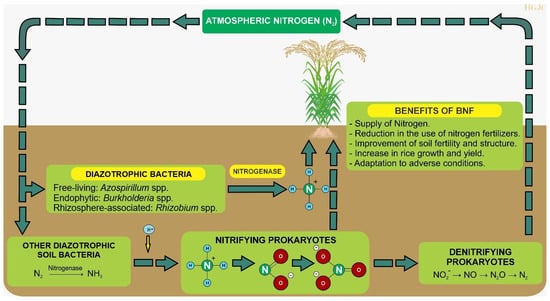
Figure 1
Open AccessArticle
Monochromatic Light Interactions in the Early Hypocotyl Elongation of Sunflower (Helianthus annuus L.) Seedlings
by
Dragan Vinterhalter, Vaclav Motyka and Branka Vinterhalter
Int. J. Plant Biol. 2025, 16(1), 8; https://doi.org/10.3390/ijpb16010008 - 7 Jan 2025
Abstract
Sunflower is a crop species well adapted for cultivation in open fields under full sunlight. Young plantlets can be grown in growth chambers under low irradiance, where different aspects of light can be easily tracked. Using time-lapse imaging, we have shown how monochromatic
[...] Read more.
Sunflower is a crop species well adapted for cultivation in open fields under full sunlight. Young plantlets can be grown in growth chambers under low irradiance, where different aspects of light can be easily tracked. Using time-lapse imaging, we have shown how monochromatic red, blue, and far-red light and their combinations interacted, affecting the rhythmicity and elongation of sunflower hypocotyls. Monochromatic light of any color, applied individually, canceled all manifestations of diurnal rhythmicity and anticipation of imminent light transitions present in diurnal photoperiods established by white LED light panels. Monochromatic light also significantly increased the rate of hypocotyl elongation, which became uniform (arrhythmic) and often triggered the appearance of guttation. The rate of hypocotyl elongation was highest with the blue light and lowest with red light. In double light combinations, red light suppressed the stimulative effect of blue light, but it promoted the elongation rate when used together with far-red light. A triple light combination of red, blue, and far-red light stimulated hypocotyl elongation to a high degree and increased the elongation rate more than twofold compared with red and fourfold compared with white LED light.
Full article
(This article belongs to the Section Plant Response to Stresses)
►▼
Show Figures
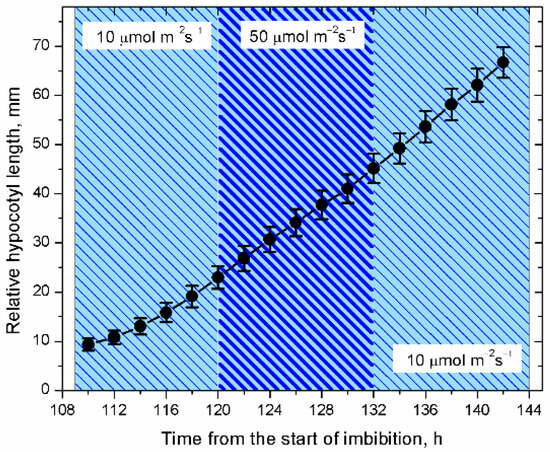
Figure 1
Open AccessArticle
Characterization of the N6-Methyladenosine Gene Family in Peanuts and Its Role in Abiotic Stress
by
Wei Wang, Jianxin Bian, Xiaoyu Liu and Xiaoqin Liu
Int. J. Plant Biol. 2025, 16(1), 7; https://doi.org/10.3390/ijpb16010007 - 6 Jan 2025
Abstract
Members of the m6A gene family are involved in key biological processes such as plant growth, development, stress responses, and light signal transduction. However, the function of m6A genes in peanuts has been understudied. Our analysis identified 61 m
[...] Read more.
Members of the m6A gene family are involved in key biological processes such as plant growth, development, stress responses, and light signal transduction. However, the function of m6A genes in peanuts has been understudied. Our analysis identified 61 m6A family members in the peanut genome, including 21 writer genes, 22 eraser genes, and 18 reader genes, distributed across 20 chromosomes. Phylogenetic analysis revealed that ALKBH proteins are categorized into six subfamilies, while YTH family proteins form nine subfamilies. Promoter cis-element analysis indicated that m6A gene promoters contain light-responsive, hormone-responsive, growth-related, low-temperature defense, and other stress-related elements. Expression studies of AhALKBH8Ba and AhALKBH8Bb in various peanut tissues suggest that these genes play vital roles in peanut fruit needle development. Furthermore, AhETC1a and AhETC1b were significantly upregulated following the loss of mechanical pressure in peanut pods. This study identifies several key genes involved in light and mechanical stress response during peanut pod development.
Full article
(This article belongs to the Section Plant Biochemistry and Genetics)
►▼
Show Figures
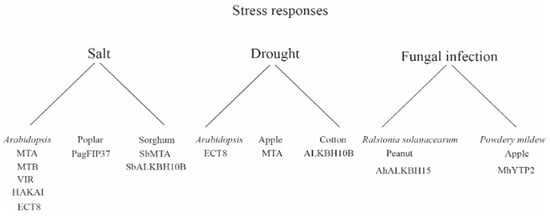
Figure 1
Open AccessArticle
Comprehensive In Silico Analysis of the NHX (Na+/H+ Antiporter) Gene in Rice (Oryza sativa L.)
by
Hoa Hai Thi Bui, Duong Huy Nguyen, Le Thu Thi Dinh, Hang Thu Thi Trinh, Thoa Kim Vu and Van Ngoc Bui
Int. J. Plant Biol. 2025, 16(1), 6; https://doi.org/10.3390/ijpb16010006 - 6 Jan 2025
Abstract
The Na+/H+ antiporter (NHX) gene family plays a pivotal role in plant salt tolerance in regulating intracellular Na+ and H+ homeostasis. In this study, seven candidate OsNHX genes (OsNHX1 to OsNHX7) were identified in
[...] Read more.
The Na+/H+ antiporter (NHX) gene family plays a pivotal role in plant salt tolerance in regulating intracellular Na+ and H+ homeostasis. In this study, seven candidate OsNHX genes (OsNHX1 to OsNHX7) were identified in the rice genome and classified into three phylogenetic clusters (Vac, Endo, and PM) based on their predicted subcellular localization. Five OsNHX gene pairs (OsNHX1/OsNHX2, OsNHX1/OsNHX3, OsNHX1/OsNHX4, OsNHX2/OsNHX6, and OsNHX5/OsNHX6) were found to have arisen from dispersed duplication events and exhibited purifying selection, indicating functional conservation. Analysis of cis-regulatory elements (CREs) revealed a diverse range of elements associated with tissue-specific expression, hormone signaling, and stress responses, particularly to dehydration and salinity. Notably, CREs associated with tissue/organelle-specific expression and stress responses were the most abundant, suggesting a potential role for OsNHX genes in regulating growth, development, and stress tolerance in rice. Importantly, expression profiling revealed that OsNHX1, OsNHX2, OsNHX3, and OsNHX5 were upregulated under salt stress, with significantly higher expression levels in the salt-tolerant rice cultivar Pokkali compared to the salt-sensitive cultivar IR64. Our findings provide a comprehensive analysis of the evolutionary, structural, and functional features of the OsNHX gene family and highlights their critical role in rice salt tolerance, offering insights into potential applications for crop improvement.
Full article
(This article belongs to the Topic Tolerance to Drought and Salt Stress in Plants, 2nd volume)
►▼
Show Figures
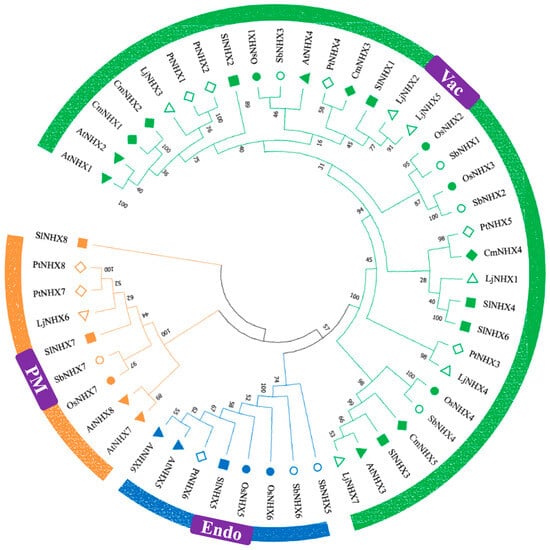
Figure 1
Open AccessReview
A Review of Edible Wild Plants Recently Introduced into Cultivation in Spain and Their Health Benefits
by
Benito Valdes, Ekaterina Kozuharova and Christina Stoycheva
Int. J. Plant Biol. 2025, 16(1), 5; https://doi.org/10.3390/ijpb16010005 - 3 Jan 2025
Abstract
Before the Bronze age, when agricultural practices spread throughout the Iberian Peninsula, the diet of the native people was based on hunting, fishing, and gathering wild plants. In spite of modern agriculture, the popular gathering of wild species for medical use, food, craftwork,
[...] Read more.
Before the Bronze age, when agricultural practices spread throughout the Iberian Peninsula, the diet of the native people was based on hunting, fishing, and gathering wild plants. In spite of modern agriculture, the popular gathering of wild species for medical use, food, craftwork, etc., for centuries has left a detailed knowledge on the use of many of these species. Of the 6176 Angiosperms native to the Iberian Peninsula and the Balearic Islands, over 200 species were introduced into cultivation during the Neolithic period outside the Iberian Peninsula. The names of 30 of the progenitors still popularly used as food are listed in this paper, together with the names of their derived crops. This review focuses on five wild species collected as food from ancient times, namely Borago officinalis L. Prunus spinosa L., Silene vulgaris (Moench) Garke subsp. vulgaris, Scolymus hispanicus L., and Asparagus acutifolius L. In response to great demand, they have been recently introduced into cultivation in Spain and are now harvested and commercialized as new crops. Special attention is paid to their basic bioactive compounds and pharmacological properties. The limitation of this study is that the published information about the bioactive compounds of these five plants originates from different parts of the world where they grow wild or are cultivated. Therefore, further research is needed to trace the metabolomic dynamics of these plants regarding geographical and ecological principles, as well as wild versus cultivated origins.
Full article
(This article belongs to the Section Plant Ecology and Biodiversity)
►▼
Show Figures
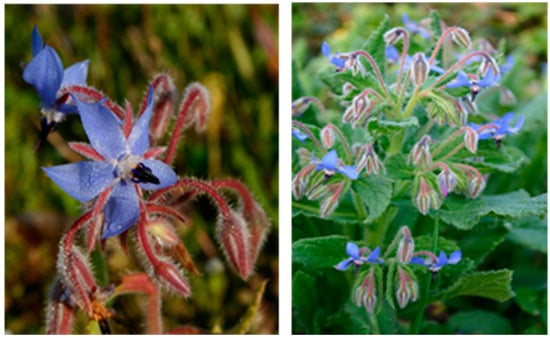
Figure 1
Open AccessArticle
Effect of Different Media and Plant Hormone Concentrations on Callus Induction and Regeneration of Red Squill (Squilla maura) and Peruvian Squill (Oncostema peruviana)
by
Ibtisam Chakrane, Omar Chlyah, Said Boughribil, Fatima Gaboun and Meriem Mdarhri Alaoui
Int. J. Plant Biol. 2025, 16(1), 4; https://doi.org/10.3390/ijpb16010004 - 2 Jan 2025
Abstract
Two bulbous plant species, Squilla maura and Oncostema peruviana (Asparagaceae), show particularly interesting ornamental and medicinal characteristics. Micropropagation could be a promising alternative method to accelerate their naturally slow spreading pattern. This study focused on the effects of different growth regulators and culture
[...] Read more.
Two bulbous plant species, Squilla maura and Oncostema peruviana (Asparagaceae), show particularly interesting ornamental and medicinal characteristics. Micropropagation could be a promising alternative method to accelerate their naturally slow spreading pattern. This study focused on the effects of different growth regulators and culture media on callus induction and shoot regeneration, from which an effective protocol was established. Leaf explants were cultured on Murashige and Skoog (MS), MS/2, or B5 medium, containing one auxin—1-Naphthaleneacetic acid (NAA), 2,4-Dichlorophenoxyacetic acid (2.4-D), or 3-indolebutyric acid (IBA)—combined with the cytokinin 6-Benzylaminopurine (BAP), at various concentrations. All treatments resulted in callogenesis rates between 65–100% for both species. These treatments led to direct bulbil regeneration. Among the treatments, the B5 medium with 1 mgL−1 BAP and 1 mgL−1 2,4-D gave the highest regeneration rate (89.2%) for O. peruviana, while the ½MS medium with 0.5 mgL−1 BAP and 0.5 mgL−1 NAA showed the highest regeneration rate (85.5%) for S. maura. The highest mean number of bulils per explant was 7.44 for O. peruviana on the MS medium (0.5 mgL−1 BAP and 2 mgL−1 IBA), and 9.5 for S. maura on the MS medium (1 mgL−1 BAP and 0.5 mgL−1 NAA). The regenerated bulbils were transferred for multiplication to the MS medium with a hormone combination (2 mgL−1 BAP and 0.2 mgL−1 NAA) which increased the multiplication rate compared to the callus induction me dium, with a highest recorded multiplication rate of 177 (O. peruviana) and 104.33 (S. maura). The propagation stage achieved the highest number of bulbils/explant after a second subculture for the two species. An efficient micropropagation protocol was established for S. maura, which answers our main objective, and it would contribute to their conservation and sustainable use in ornamental and medicinal applications.
Full article
(This article belongs to the Section Plant Reproduction)
►▼
Show Figures

Figure 1
Open AccessBrief Report
The Effects of Bradyrhizobium japonicum Inoculation and Superphosphate Fertilizer on the Growth and Development of Lablab (Lablab purpureus L.)
by
Latoya Miranda Mthimunye, Gudani Millicent Managa and Lufuno Ethel Nemadodzi
Int. J. Plant Biol. 2025, 16(1), 3; https://doi.org/10.3390/ijpb16010003 - 2 Jan 2025
Abstract
Nutrient-poor savanna soils severely limit agricultural productivity in Africa, hindering crops and livestock intensification and threatening food security. Addressing these deficiencies is crucial to meeting the world’s growing food demands and ensuring sustainable agricultural development. The experiment was conducted in a greenhouse laid
[...] Read more.
Nutrient-poor savanna soils severely limit agricultural productivity in Africa, hindering crops and livestock intensification and threatening food security. Addressing these deficiencies is crucial to meeting the world’s growing food demands and ensuring sustainable agricultural development. The experiment was conducted in a greenhouse laid in a randomized complete block design with eight treatments, namely: (T1) control, (T2) 45 kg/ha superphosphate, (T3) 60 kg/ha superphosphate, (T4) 75 kg/ha superphosphate, (T5) Bradyrhizobium japonicum inoculant, (T6) Bradyrhizobium japonicum inoculant +45 kg/ha superphosphate, (T7) Bradyrhizobium japonicum inoculant +60 kg/ha superphosphate, and (T8) Bradyrhizobium japonicum inoculant +75 kg/ha superphosphate. The findings showed that the highest plant height was noted when lablab was supplemented with T4 treatment at day 21, while T2 of superphosphate had the highest leaf area. Conversely, soil supplemented with superphosphate at different levels and/or lablab seeds treated with Bradyrhizobium inoculant did not have a significant effect on the number of leaves. Overall, the application of superphosphate to the soil at different levels and treating lablab seeds with Bradyrhizobium inoculant did not have any significant effect on the plant height, number of leaves, and leaf area. On day 37, the highest leaf chlorophyll was recorded on T1 and became constant amongst all the treatments as the growth progressed. From the current study, it is concluded that growing lablab in a controlled environment would benefit subsistence farmers and rural communities for its leaves consumed as vegetables and ultimately ensure food security.
Full article
(This article belongs to the Section Plant Physiology)
►▼
Show Figures
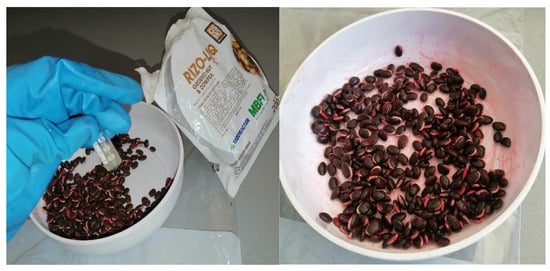
Figure 1
Open AccessArticle
Hormonal Priming to Increase Germination of Stevia rebaudiana Bertoni Seeds in Saline Environments
by
Iman Janah, Abdelhadi Elhasnaoui, Houssam Abouloifa, Mohamed Ait-El-Mokhtar and Raja Ben Laouane
Int. J. Plant Biol. 2025, 16(1), 2; https://doi.org/10.3390/ijpb16010002 - 2 Jan 2025
Abstract
Hormonal priming has recently emerged as a powerful strategy to increase seed germination and early seedling growth, especially in challenging abiotic stress environments. This study explored the impact of gibberellic acid (GA) and salicylic acid (SA) priming on the germination performance of Stevia
[...] Read more.
Hormonal priming has recently emerged as a powerful strategy to increase seed germination and early seedling growth, especially in challenging abiotic stress environments. This study explored the impact of gibberellic acid (GA) and salicylic acid (SA) priming on the germination performance of Stevia rebaudiana seeds under saline conditions. Stevia seeds were either hydroprimed with distilled water (control) or primed with varying concentrations of GA (0.1 and 0.2%) and SA (0.25 and 0.5 mM) and then exposed to salt stress (0 and 80 mM NaCl). The results demonstrated that GA and SA priming significantly enhanced germination rates, reduced mean germination time, and improved the salt tolerance index compared to untreated seeds. Primed seeds showed notable improvements in seedling vigor, including greater shoot and root lengths under salinity stress. The best results were achieved with 0.1% GA and 0.5 mM SA, effectively alleviating the detrimental impact of high salinity on germination. The primed seeds also exhibited reduced electrolyte leakage, signifying improved membrane stability under salt stress. In conclusion, this study presents robust evidence that GA and SA priming is an effective approach for enhancing the germination, salt tolerance index, and early growth of Stevia under saline conditions, offering a practical solution to improve crop establishment in salinity-affected regions.
Full article
(This article belongs to the Section Plant Response to Stresses)
►▼
Show Figures
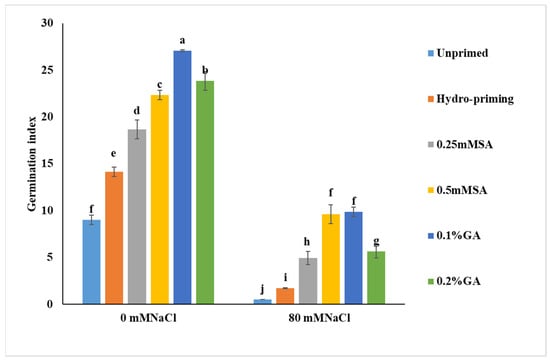
Figure 1
Open AccessArticle
Plant Growth-Promoting and Biocontrol Characteristics of Four Bacillus Strains and Evaluation of Their Effects on Wheat (Tr. aestivum L.)
by
Mariana Petkova, Marina Marcheva, Antonia-Lucia Petrova, Vanya Slavova and Stefan Shilev
Int. J. Plant Biol. 2025, 16(1), 1; https://doi.org/10.3390/ijpb16010001 - 27 Dec 2024
Abstract
The present study investigated developing biological control agents against plant pathogens as an alternative to pesticides. The plant growth-promoting (PGP) and biocontrol potential of bacteria from the Bacillus genus is due to their ability to produce proteolytic and amylolytic enzymes, assist in the
[...] Read more.
The present study investigated developing biological control agents against plant pathogens as an alternative to pesticides. The plant growth-promoting (PGP) and biocontrol potential of bacteria from the Bacillus genus is due to their ability to produce proteolytic and amylolytic enzymes, assist in the solubilization of phosphorus and zinc, and the production of siderophores. Cell culture and cell-free supernatant were used to investigate the antimicrobial activity of different Bacillus strains against the phytopathogenic fungus Fusarium graminearum in vitro. Fusarium graminearum is a fungus that causes plant disease, particularly in cereals like wheat and barley. As a result, significant suppression of the growth and development of this plant pathogen was observed. Plant growth-promoting activity manifested when the bacteria were applied alone and in combination. A single strain and combinations of two, three, and four strains of Bacillus were tested for their antimicrobial effects against Fusarium graminearum. The fluorescence spectroscopy results proved that the combination of Bacillus subtilis, Bacillus circulans, Bacillus megaterium, and Bacillus licheniformis showed the best stimulation of development, expressed as a comparative evaluation of the yield compared to the untreated control variant. The four strains showed their potential application as a biocontrol agent against Fusarium graminearum. The four Bacillus strains also can promote plant growth by affecting nutrition, root structure, and plant health, and they have the capacity to dissolve phosphates and zinc.
Full article
(This article belongs to the Section Plant–Microorganisms Interactions)
►▼
Show Figures
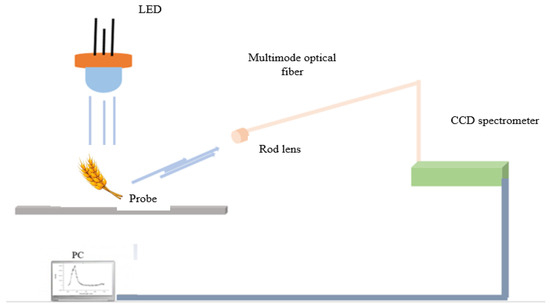
Figure 1
Open AccessArticle
The Role of Different Rhizobacteria in Mitigating Aluminum Stress in Rice (Oriza sativa L.)
by
Mercedes Susana Carranza-Patiño, Juan Antonio Torres-Rodriguez, Juan José Reyes-Pérez, Robinson J. Herrera-Feijoo, Ángel Virgilio Cedeño-Moreira, Alejandro Jair Coello Mieles, Cristhian John Macías Holguín and Cristhian Chicaiza-Ortiz
Int. J. Plant Biol. 2024, 15(4), 1418-1436; https://doi.org/10.3390/ijpb15040098 - 23 Dec 2024
Abstract
Aluminum toxicity in acidic soils threatens rice (Oryza sativa L.) cultivation, hindering agricultural productivity. This study explores the potential of plant growth-promoting rhizobacteria (PGPR) as a novel and sustainable approach to mitigate aluminum stress in rice. Two rice varieties, INIAP-4M and SUPREMA
[...] Read more.
Aluminum toxicity in acidic soils threatens rice (Oryza sativa L.) cultivation, hindering agricultural productivity. This study explores the potential of plant growth-promoting rhizobacteria (PGPR) as a novel and sustainable approach to mitigate aluminum stress in rice. Two rice varieties, INIAP-4M and SUPREMA I-1480, were selected for controlled laboratory experiments. Seedlings were exposed to varying aluminum concentrations (0, 2, 4, 8, and 16 mM) in the presence of four PGPR strains: Serratia marcescens (MO4), Enterobacter asburiae (MO5), Pseudomonas veronii (R4), and Pseudomonas protegens (CHAO). The INIAP-4M variety exhibited greater tolerance to aluminum than SUPREMA I-1480, maintaining 100% germination up to 4 mM and higher vigor index values. The study revealed that rhizobacteria exhibited different responses to aluminum concentrations. P. protegens and S. marcescens showed the highest viability at 0 mM (2.65 × 1010 and 1.71 × 1010 CFU mL−1, respectively). However, P. veronii and S. marcescens exhibited the highest viability at aluminum concentrations of 2 and 4 mM, indicating their superior tolerance and adaptability under moderate aluminum stress. At 16 mM, all strains experienced a decrease, with P. protegens and E. asburiae being the most sensitive. The application of a microbial consortium significantly enhanced plant growth, increasing plant height to 73.75 cm, root fresh weight to 2.50 g, and leaf fresh weight to 6 g compared to the control (42.75 cm, 0.88 g, and 3.63 g, respectively). These findings suggest that PGPR offer a promising and sustainable strategy to bolster rice resilience against aluminum stress and potentially improve crop productivity in heavy metal-contaminated soils.
Full article
(This article belongs to the Section Plant–Microorganisms Interactions)
►▼
Show Figures

Figure 1
Open AccessArticle
Characterization of the Rhizobiome of the Yellow Pitcher Plant (Sarracenia flava) in Wild and Restored Habitats of Virginia
by
Bo-Young Lee, Nikki Andresen, Phil Sheridan and Bonnie L. Brown
Int. J. Plant Biol. 2024, 15(4), 1405-1417; https://doi.org/10.3390/ijpb15040097 - 23 Dec 2024
Abstract
The yellow pitcher plant, Sarracenia flava, is an insectivorous perennial distributed extensively in southeastern North America. In Virginia, it is restricted to a few wetland ecosystems, with only one natural site known to remain. To uncover whether there were microbial differences in
[...] Read more.
The yellow pitcher plant, Sarracenia flava, is an insectivorous perennial distributed extensively in southeastern North America. In Virginia, it is restricted to a few wetland ecosystems, with only one natural site known to remain. To uncover whether there were microbial differences in the rhizospheres across natural and reintroduced sites of pitcher plant restoration, shotgun metagenome sequencing was undertaken to characterize the microbiomes of the healthy rhizosphere in the last remaining natural stand in Virginia compared to rhizospheres sampled in two restored habitats where pitcher plants were reintroduced and a nearby control habitat without pitcher plants. Statistical analysis showed no significant differences in rhizobiome communities among the natural, reintroduced, and control sites. Comparison of test rhizobiomes with those of other soil types revealed no significant difference in S. flava habitats versus wildland soil types but significant difference from agricultural soils. Indicator species analysis found Pseudomonas was a significantly more abundant genus in the S. flava habitats. The control site was enriched with iron-reducing bacteria compared to the rest of the sites. Further studies based on gene expression could better facilitate an understanding of the role of Pseudomonas in S. flava rhizosphere specific to habitats, which will provide better knowledge for local conservation of this plant.
Full article
(This article belongs to the Section Plant–Microorganisms Interactions)
►▼
Show Figures
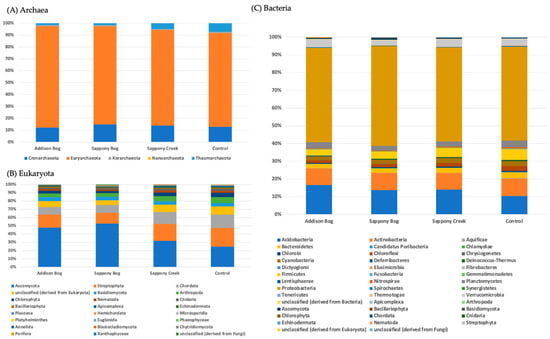
Figure 1
Highly Accessed Articles
Latest Books
E-Mail Alert
News
Topics
Topic in
Biology, Diversity, IJPB, Plants, Taxonomy, Ecologies, Sustainability
Diversity and Conservation of Flora in Africa
Topic Editors: Shengwei Wang, Veronicah Mutele Ngumbau, Yadong Zhou, Desalegn Chala, Guangwan HuDeadline: 31 March 2025
Topic in
Agronomy, Diversity, Forests, IJPB, Plants
Plant Invasion
Topic Editors: Bruce Osborne, Panayiotis G. DimitrakopoulosDeadline: 31 July 2025
Topic in
Diversity, Forests, Genes, IJPB, Plants
Plant Chloroplast Genome and Evolution
Topic Editors: Chao Shi, Lassaâd Belbahri, Shuo WangDeadline: 31 August 2025
Topic in
Agriculture, Agronomy, Crops, Microorganisms, Plants, IJPB, Soil Systems
Microbe-Induced Abiotic Stress Alleviation in Plants
Topic Editors: Ying Ma, Christopher RensingDeadline: 31 October 2025

Conferences
Special Issues
Special Issue in
IJPB
The Role of Plant Growth-Promoting Bacteria in Enhancing Plant Health and Growth
Guest Editors: Glacy da Silva, Pedro Henrique Riboldi MonteiroDeadline: 28 February 2025
Special Issue in
IJPB
Ecophysiological Responses of Tropical Plants to Climate Change
Guest Editor: Geraldo Rogério Faustini CuzzuolDeadline: 31 March 2025
Special Issue in
IJPB
Plant Resistance to Insects
Guest Editor: Horacio Salomón Ballina-GómezDeadline: 6 June 2025
Special Issue in
IJPB
Challenges in Cannabis sativa: Breeding and Secondary Metabolite Synthesis
Guest Editor: Mariana QuirogaDeadline: 30 June 2025





